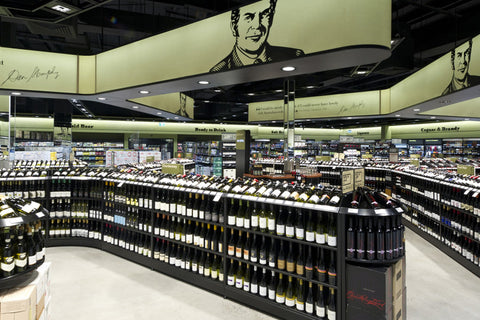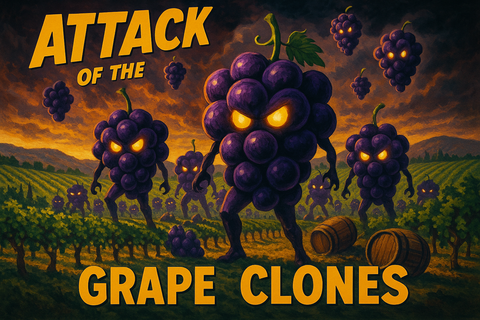Australian chardonnay never really left, it just shed its old skin and emerged as something far more sophisticated than the buttery, oaky blockbusters that dominated the 1990s. Today's Australian chardonnay scene is experiencing a remarkable renaissance, with winemakers across the continent crafting elegant, terroir-driven wines that rival the world's finest expressions of this noble grape.
The Great Chardonnay Correction
The notion that Australian chardonnay "went away" stems from a period when heavily oaked, high-alcohol styles fell out of favour with changing consumer preferences. But while some drinkers turned their backs on chardonnay altogether, Australia's most talented winemakers were quietly revolutionising their approach. They reduced oak influence, picked grapes earlier to maintain acidity, and began exploring cooler climate sites that had been overlooked during the rush for power and richness.
This shift coincided with a broader movement towards food-friendly wines and a growing appreciation for subtlety over spectacle. The result? A new generation of Australian chardonnays that showcase pure fruit expression, mineral complexity, and remarkable ageing potential.
Australia's Premier Chardonnay Regions
Adelaide Hills, South Australia
The Adelaide Hills has emerged as Australia's premier cool-climate chardonnay region. Sitting at elevations between 400-700 metres, vineyards here benefit from cool nights and warm days that preserve natural acidity whilst developing complex flavours. Producers like Shaw + Smith, Petaluma, and Bird in Hand craft chardonnays with citrus precision, stone fruit depth, and subtle oak integration that speaks more of Burgundy than old-school Australia.
The region's diverse soil types, from sandy loams to clay over limestone, contribute to wines with distinctive mineral signatures. These chardonnays age beautifully, developing honeyed complexity whilst maintaining their characteristic freshness.
McLaren Vale, South Australia
Whilst traditionally known for shiraz, McLaren Vale has quietly become a source of exceptional white wines, including some outstanding chardonnays. The region's Mediterranean climate, combined with diverse soil types ranging from sand over clay to ancient geological formations, creates ideal conditions for white wine production. The sea breezes from Gulf St Vincent help moderate temperatures, preserving the natural acidity that makes these wines so food-friendly.
McLaren Vale's chardonnay producers are crafting wines that showcase the region's unique character—often displaying riper stone fruit flavours balanced by coastal minerality and subtle oak influence. Explore the exceptional range of white wines from McLaren Vale, where local producers demonstrate the region's versatility beyond its famous reds.
Yarra Valley, Victoria
Victoria's Yarra Valley has long been recognised for producing some of Australia's most elegant chardonnays. The region's cool climate, influenced by its proximity to Melbourne and elevation, creates ideal conditions for slow ripening and flavour development. Sites in the Upper Yarra, particularly around Hoddles Creek and Warburton, produce chardonnays of exceptional finesse.
Producers such as Coldstream Hills, De Bortoli, and Mac Forbes have mastered the art of crafting chardonnays that balance power with restraint. These wines often display beautiful integration of French oak, with notes of white peach, citrus blossom, and subtle spice.
Mornington Peninsula, Victoria
The maritime climate of the Mornington Peninsula creates some of Australia's most Burgundian chardonnays. Ocean influences moderate temperatures and extend the growing season, allowing for the development of complex flavours whilst preserving natural acidity.
Winemakers like T'Gallant, Kooyong, and Port Phillip Estate produce chardonnays with remarkable mineral drive and age-worthiness. The region's red volcanic soils impart a distinctive earthy quality that sets these wines apart from their mainland counterparts.
Margaret River, Western Australia
Whilst Margaret River is famous for its cabernet sauvignon blends, the region also produces outstanding chardonnay. The Mediterranean climate, moderated by ocean breezes, creates ideal conditions for this variety. The region's gravelly soils and reliable rainfall produce chardonnays with tropical fruit flavours balanced by crisp acidity.
Leeuwin Estate's Art Series Chardonnay has long been considered one of Australia's finest, whilst newer producers like Vasse Felix and Cullen continue to push boundaries with innovative winemaking techniques.
Coal River Valley, Tasmania
Tasmania's cool climate has made it a hotspot for premium chardonnay production. The Coal River Valley, in particular, produces wines of exceptional elegance and complexity. The island's pristine environment and long, cool ripening period create chardonnays with intense flavour concentration and natural acidity.
Producers like Pooley Wines and Frogmore Creek craft chardonnays that display remarkable purity and mineral complexity, often with subtle smoky notes that reflect the region's unique terroir.
Modern Winemaking Philosophy
Today's Australian chardonnay producers have embraced techniques that emphasise fruit purity and terroir expression. Wild fermentation, extended lees contact, and judicious use of new oak have become standard practices. Many winemakers are also experimenting with different vessel types, including concrete eggs and amphora, to add textural complexity without overwhelming the fruit.
The focus has shifted from power to precision, from obvious oak to subtle integration, and from immediate gratification to wines that reward patience. This philosophical shift has elevated Australian chardonnay from a category dominated by commercial brands to one that produces some of the world's most compelling expressions of the variety.
The Global Recognition
International wine critics and consumers have taken notice of this transformation. Australian chardonnays now regularly feature in prestigious tastings and wine lists around the world. The country's commitment to quality over quantity has paid dividends, with premium Australian chardonnays commanding respect alongside their French counterparts.
This renaissance isn't just about individual producers or regions, it represents a fundamental shift in how Australia approaches winemaking. The focus on site selection, sustainable viticulture, and minimal intervention winemaking has created a new generation of wines that truly reflect their origins.
Australian chardonnay hasn't just returned—it has evolved into something more sophisticated, more diverse, and more exciting than ever before. From the cool hills of Adelaide to Tasmania's pristine valleys, Australia's winemakers are proving that great chardonnay isn't just about tradition—it's about understanding place, respecting fruit, and having the courage to let terroir speak.
For wine enthusiasts seeking to explore Australia's chardonnay renaissance, visiting these regions offers the opportunity to taste wines that represent the very best of modern Australian winemaking; elegant, food-friendly, and built to age gracefully.




Comments (0)
There are no comments for this article. Be the first one to leave a message!